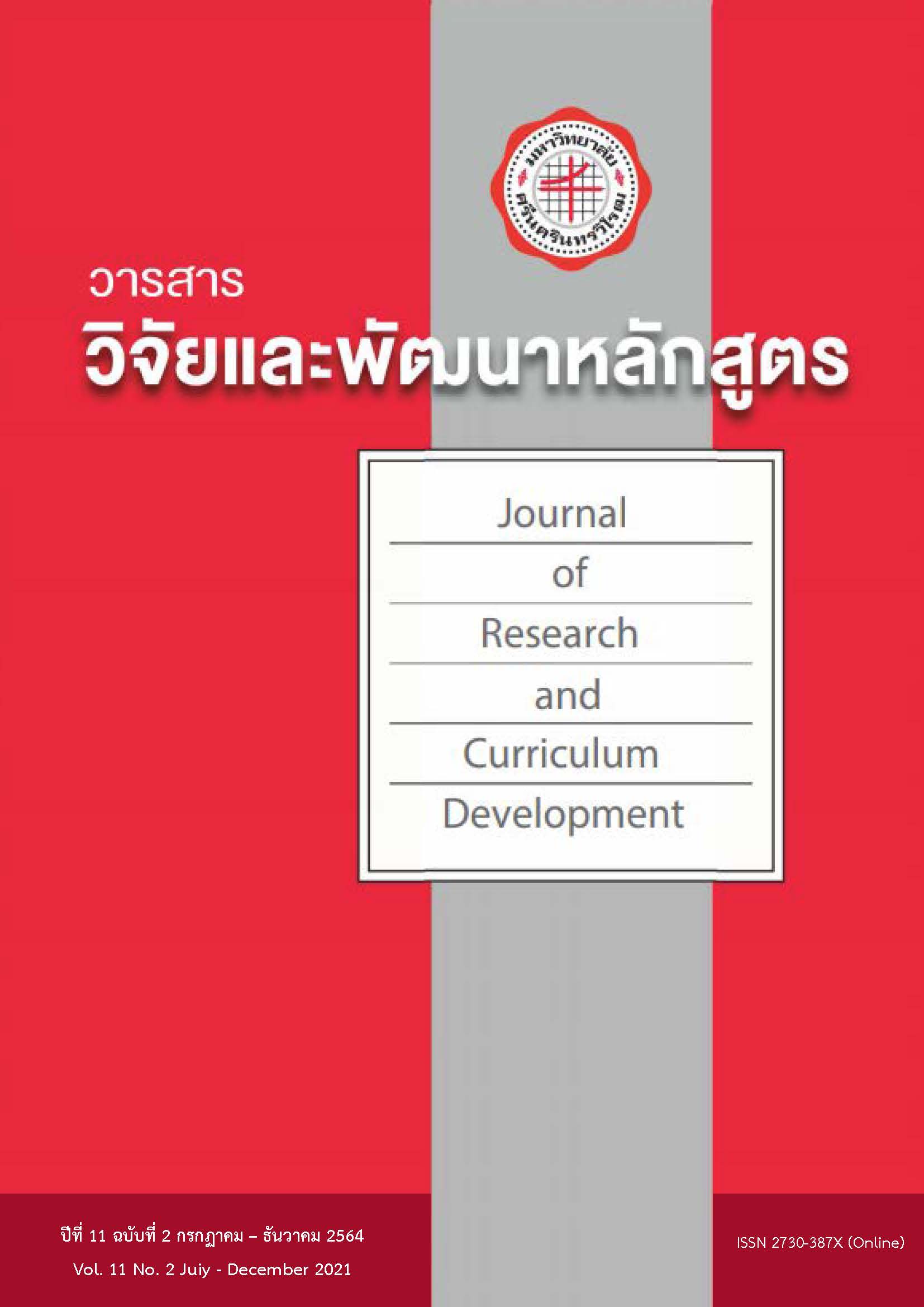ประสิทธิผลของโปรแกรมการเรียนรู้เน้นโรงเรียนเป็นฐานที่มีต่อการคิดเชิงออกแบบนวัตกรรม ของนักเรียนอาชีวศึกษาเขตกรุงเทพมหานคร
Keywords:
Innovative design thinking, Vocational school students, School-based programAbstract
This research aims to investigate the effect of school-based learning program on innovative thinking among vocational school students and to evaluate the effectiveness of innovation learning program among vocational students. The program was developed according to the concepts of cognitive psychology. The learning program consists of 14 experiences in classroom each week. The participants consisted of 139 vocational school students aged 18 years in Bangkok metropolitan area. The research instruments consisted of demographic information questionnaires, the school-based innovation learning program, and innovative design thinking scale. The quasi-experimental research design was employed to investigate the effectiveness of developed program on innovation design thinking. Data were analyzed by multivariate analysis of variance test statistics. To test the difference of mean, the components of the innovative design thinking feature consisted of cognition, motivation and social aspects. Evaluation of program effectiveness based on the indicators developed by the researcher. Results demonstrated that the intervention program has effect on innovative thinking ability among vocational school students. The overall effectiveness evaluation of the learning program is consistent with previous studies. These include: 1) the activities are consistent with the key elements in the designed learning program outline; 2) the design of the learning program has a concept that is consistent with the implementation; 3) the number and quantity of learning management for the students; 4) the quality of the learning program which convey to students 5) learner responses, 6) activities and social support, 7) public service mind, and 8) program sustainability. The constructs of innovative thinking process should be utilized in practical subjects. User should develop innovative thinking program according to cognition, motivation and social aspects and utilize together with the evaluation of effectiveness which should be done in every circumstances.
References
J.39(5): 573-596.
Anderson, L., & Krathwohl, D. (2001). A Taxonomy for Learning Teaching and Assessing:
A Revision of Bloom’s Taxonomy of Educational Objectives. New York: Longman.
Baer, M. (2012). Putting Creativity to Work: The Implementation of Creative Ideas in
Organization. Acad, Manag, J. 55(5): 1102-1119.
Belden, T.G., & Belden, M.R. (1962). The Lengthening Shadow: The Life of Thomas J.
Watson. Boston: Little, Brown and Company
Berger, M.C. (1984). Critical Thinking Ability and Nursing Students. Journal of Nursing
Education. 23: 306-308.
ทิศนา แขมมณี. (2556). ศาสตร์การสอน: องค์ความรู้เพื่อการจัดกระบวนการเรียนรู้ที่มี
ประสิทธิภาพ. พิมพ์ครั้งที่ 17. กรุงเทพฯ: สำนักพิมพ์แห่งจุฬาลงกรณ์มหาวิทยาลัย.
ทิศนา แขมมณี และคณะ. (2544). วิทยาการด้านการคิด. กรุงเทพฯ: เดอะมาสเตอร์กรุ๊ป
แมเนจเม้นท์ จำกัด.
สิทธิพงศ์ วัฒนานนท์สกุล. (2561). ประสิทธิผลของโปรแกรมเชิงป้องกันการสูบบุหรี่โดยเน้นโรงเรียน
เป็นฐานที่มีผลต่อผลลัพธ์การรู้คิดเกี่ยวกับการสูบบุหรี่ ในนักเรียนชั้นมัธยมศึกษาตอนต้น เขต
กรุงเทพมหานคร. วารสารวิจัยและพัฒนาหลักสูตร, 8(1), 193-219.
สิทธิพงศ์ วัฒนานนท์สกุล (2560). การตรวจสอบความตรงโมเดลการวัดกลยุทธ์การกำกับตนเองในการ
เรียนรู้ เชิงวิชาการของนักศึกษามหาวิทยาลัย.วารสารพฤติกรรมศาสตร์, 23(2), 43-60.





